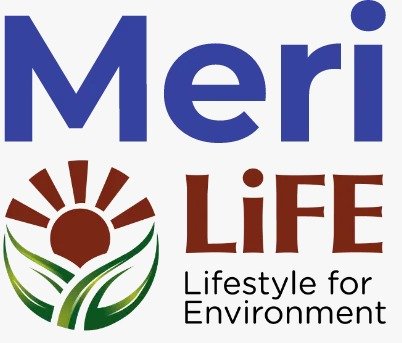KING COBRA (Ophiophagus hannah)
- The king cobra (Ophiophagus hannah) is the world's longest venomous snake, endemic to forests from India through Southeast Asia; listed as Vulnerable on the IUCN Red List since 2010.
- It is the national reptile of India.
- It preys chiefly on other snakes and occasionally on some other vertebrates, such as lizards, small birds and rodents.
- After a large meal, it lives for many months without another one because of its slow metabolic rate.
- They possess potent neurotoxic venom and death can occur in as little as 30 minutes after being bitten.
- It is sexually dimorphic, with males being larger and paler in particular during the breeding season.
- The king cobra is the only snake that builds a nest using dry leaf litter, starting from late March to late May. The female scrapes up leaves and other debris into a mound, and stays in the nest until the young hatch.
- Clutch size ranges from 7 to 43 eggs, with 6 to 38 eggs hatching after incubation periods of 66 to 105 days.
- The venom of hatchlings is as potent as that of the adults. They may be brightly marked, but these colours often fade as they mature.
- The average lifespan of a wild king cobra is about 20 years.
# Physical Characteristics
- The King Cobra (Ophiophagus hannah) is the world's longest venomous snake, growing up to 18.5 feet (5.6 meters) in length.
- It has a sleek, slender build with a broad, flat head and a long, thin tail.
- Its scales are typically brown or greenish-brown, with lighter-colored bands or markings.
# Habitat and Distribution
- King Cobras are found in the tropical forests of Southeast Asia and India.
- They inhabit dense, humid forests with abundant prey and suitable shelter.
- They are excellent climbers and often live in trees or rocky outcrops.
# Behavior and Diet
- King Cobras are carnivores and primarily feed on other snakes, including venomous species.
- They are skilled hunters, using their keen eyesight and agility to catch prey.
- They are generally solitary animals and only come together during mating season.
# Reproduction and Lifespan
- King Cobras breed during the monsoon season, with females laying up to 50 eggs per clutch.
- The eggs incubate for approximately 70 days, and the hatchlings are independent from birth.
- King Cobras can live up to 20 years in the wild.
# Conservation Status
- King Cobras are listed as Vulnerable on the IUCN Red List due to habitat loss, fragmentation, and poaching.
- Conservation efforts are underway to protect their habitats and reduce human-snake conflict.
# Interesting Facts
- King Cobras are known for their impressive hood, which they flare out when threatened or during courtship displays.
- They have a potent venom that can kill within 45 minutes if left untreated.
- Despite their fearsome reputation, King Cobras are generally shy and avoid confrontations with humans.
General Information About Snakes
- Snakes have existed on this earth for 130 million years, since the era of dinosaurs.
- There are more than 2500 species of snakes in the world, out of which about 20% of species are venomous.
- About 300 species of snakes are found in India.
- There are mainly four venomous snakes found in India - Common Krait, Cobra, Russell's Viper, Saw-Scaled Viper.
- The process of removing venom from snakes is called "milking". This can be done only in authorized institutes by the experts.
- King Cobra is the world's largest venomous snake and the only snake that makes a nest and lays eggs.
- Not all species of snakes lay eggs. 70% of snakes lay eggs and the rest give birth directly (ovoviviparous).
- About 2.5 lakh people in India suffer from snakebite every year, out of which about 50,000 die due to lack of treatment.
- There are many myths related to the Red Sand Boa, which people consider to be a two-faced snake, the shape of its tail is similar to its mouth, which confuses people.
- There is no poison in the tail of any snake, poisonous snakes hunt with their venom.
- Neither the snake drinks milk, nor the snake has a naagmani, these are all misconceptions.
- All snakes are protected under the Wildlife Protection Act 1972. Capturing or causing damage to snakes is punishable by statutory punishment, which is punishable by a fine of up to Rs 25,000/- or with imprisonment for a term which may extend to three years.
Snake Bite Prevention Methods
- In India, 75% of snake bites are below the knee.
- Keep the space around the house clean and dry.
- Keep the sacks and bags in a high place.
- Use mosquito nets while sleeping on the ground.
- Always check the beddings, clothes, shoes, etc. that are kept on the ground before using them.
- If you see a snake, stay calm and contact the snake rescuer or forest department immediately.
- Always use shoes or gumboots.
- You should not walk between dense plants after the evening.
- Always carry a stick for clearing the path and a torch to see while walking in the dark.
What if there is no sanke?
- Major diet of Snakes like Cobras and Rate snakes are rodents, these rodents eat a large part of our foodgrains. At present, the estimate of loss in foodgrains from rodents is about 20%. If snakes are not there the population of rodents will be uncontrolled and hence, the loss of foodgrains will increase by40-60%.
- Rodents can also spread diseases like plague.
Click Here to download Snake Detailed Report.
 Twitter
Twitter





